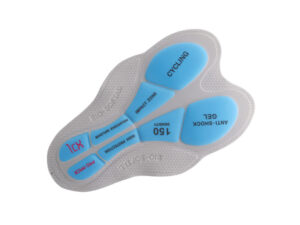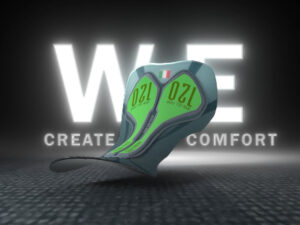Imagine setting off on a long bike ride, the scenery unfolding smoothly as you pedal with ease and comfort. This idyllic experience is often largely attributed to a seemingly small piece of attire: padded cycling shorts. Designed to provide both comfort and support, these shorts are a staple for both amateur and professional cyclists alike. In this article, we delve deep into how padded cycling shorts help, exploring their role in enhancing cycling performance and overall ride quality. As we pedal through the specifics, let’s discover why many cyclists swear by the benefits of this essential gear. Let devite into: Do Padded Cycling Shorts Help?
The Basics of Cycling Comfort
Cycling is as much about endurance as it is about comfort. The longer you ride, the more you realize that a tiny discomfort can drastically alter your performance and enjoyment. Enter padded cycling shorts: not just a piece of clothing, but a crucial tool designed to enhance saddle comfort and reduce skin irritation and friction.
The padding, typically crafted from foam or gel, acts as a buffer, absorbing shocks and vibrations that travel up the bike’s frame. This cycling pad makes it possible to cover longer distances without discomfort, ensuring that cyclists can focus on their performance rather than dealing with the annoyance of a sore posterior. It’s a classic case of small changes making a big impact—by simply upgrading your cycling shorts, you might find that the road feels a bit less daunting and a lot more enjoyable.
The Role of Padding in Performance
It’s a well-acknowledged truth in cycling circles: comfort leads to improved performance. Cyclists equipped with padded shorts (including cycling pads ) can attest to riding longer and more vigorously, as the added comfort significantly reduces the discomfort from the saddle. This not only allows for better concentration and reduced fatigue but also enhances endurance.
The science backs this up; padding can decrease the energy spent on overcoming the discomfort of a hard saddle, thereby conserving energy for pedaling. Furthermore, the strategic placement of padding helps in maintaining proper circulation and reducing pressure points, which is vital during intense rides or races. By mitigating the impacts and vibrations that a rough terrain presents, padded cycling shorts ensure that your legs preserve their strength and stamina for a prolonged effort, proving that sometimes, the right gear can be your best companion on the road.
Different Types of Cycling Shorts
When delving into the world of cycling apparel, one finds that cycling shorts are not a one-size-fits-all affair. The choice between padded and non-padded cycling shorts often depends on the type of riding and personal preference. Padded shorts provide undeniable benefits for longer and more demanding rides, offering protection and comfort that non-padded shorts simply can’t match. They feature various thicknesses and densities of padding to cater to different types of cycling, from road racing to mountain biking.
Conversely, non-padded shorts might be chosen for very short or casual rides where the extra bulk and heat retention of padding are not necessary. For riders who prioritize speed and flexibility over comfort, non-padded versions may suffice. The key is understanding your specific needs and choosing accordingly, balancing comfort against the intended cycling activity.
Material Matters
The effectiveness of padded cycling shorts is largely influenced by the materials used in their construction. High-quality shorts typically utilize advanced, breathable fabrics that aid in moisture management and help maintain an optimal temperature during rides. These materials range from high-tech synthetics like polyester and Lycra, which offer excellent stretch and moisture-wicking properties, to natural fibers like wool that provide comfort and thermal regulation.
The type of padding is also crucial; memory foam offers enduring comfort, while gel inserts might be preferred for their shock-absorbing capabilities. Additionally, the placement of seams, the quality of the stitching, and the overall design can greatly affect the comfort and durability of the shorts. Riders should seek fabrics and padding that correspond to their specific riding conditions—whether they’re facing the sweltering heat of a summer road race or the unpredictable terrain of off-road trails.
Proper Fit and Sizing
Finding the right fit in cycling shorts is as critical as choosing the right bicycle. Padded cycling shorts must fit snugly yet comfortably, ensuring that the padding remains correctly positioned to provide effective cushioning while avoiding any restriction of movement. A poorly fitting pair of shorts can lead to bunching and shifting of the material, which not only causes discomfort but also diminishes the benefits of the padding.
Cyclists should look for shorts that conform closely to their body shape, allowing for a full range of motion without any excess fabric that could lead to chafing. This often means trying on several styles and sizes to find the perfect match. Additionally, the leg length and waistband style should be considered, as these can also impact comfort and performance. Shorts that are too tight around the waist can restrict breathing, while those too loose may slip during riding. Ultimately, a well-fitting pair of padded cycling shorts can make a substantial difference in your cycling experience, blending seamless comfort with freedom of movement.
Long-Distance Rides
For those who embark on long-distance rides, padded cycling shorts become less of a luxury and more of a necessity. The extended periods spent on the saddle bring an increased risk of discomfort and saddle sores, which padded shorts are specifically designed to mitigate. The strategic cushioning distributes pressure evenly, crucial for preventing the numbness and chafing that can occur during long stints of cycling. Moreover, the quality of the padding plays a pivotal role in endurance scenarios. For cyclists covering vast distances, shorts with denser and more resilient foam or gel can provide sustained comfort, ensuring that the focus remains on the journey and the scenery, not on bodily discomfort. These shorts not only support physical well-being but also boost mental stamina by reducing the distraction of physical discomfort, proving indispensable for cyclists tackling marathons, tours, or extensive training sessions.
Short-Distance and Casual Riding
While the benefits of padded cycling shorts are most pronounced on long rides, they also hold value for short-distance and casual cyclists. Even a brief commute or a leisurely ride through the park can be enhanced by the comfort that padding offers. For these types of rides, the padding serves not so much to prevent long-term fatigue but to provide immediate comfort and shock absorption from road irregularities. Casual riders might opt for lighter padding, which offers a good balance between comfort and flexibility without the bulkiness associated with long-distance shorts. This makes padded shorts versatile across different cycling styles, appealing not only to performance athletes but also to those who bike for recreation or transportation. By integrating padded shorts into any ride, cyclists of all types can enjoy the benefits of reduced saddle pressure and enhanced riding pleasure, no matter the distance.
Women’s Specific Needs
Addressing the specific anatomical needs of women cyclists, manufacturers have developed women-specific padded cycling shorts. These shorts are designed with tailored padding placements and shapes that provide support precisely where women need it most, considering the wider pelvic width and different sitting bone structure compared to men. Such customization enhances comfort and functionality, making long rides more feasible and enjoyable for female cyclists. Moreover, the design of women’s cycling shorts often includes a shorter torso, narrower waistband, and adjusted leg openings to better fit the female form.
The attention to detail ensures that the shorts remain snug and secure, providing optimal coverage and support without sacrificing freedom of movement. For women who regularly cycle, whether competitively or for leisure, choosing the right women-specific padded shorts can significantly improve their cycling experience, promoting not only comfort but also confidence on the bike.
Maintenance and Care
Proper maintenance and care of padded cycling shorts are essential to preserve their function and prolong their lifespan. The delicate materials and specialized padding require thoughtful handling to avoid damage and wear.
Always follow the manufacturer’s instructions for washing, which typically recommend a gentle cycle with mild detergents and cold water to prevent the breakdown of fibers and padding materials. It’s also crucial to avoid the use of fabric softeners and intense heat from dryers, as these can degrade the elastic properties of the fabric and the effectiveness of the padding. Air drying is often the best method, ensuring that the shorts retain their shape and elasticity. Furthermore, regular inspection for signs of wear, such as thinning of the padding or fraying of the seams, can help cyclists determine when it’s time to replace their shorts. By caring for them properly, cyclists ensure that each pair of padded cycling shorts remains a reliable ally against discomfort on numerous rides.
FAQs
Q: How often should padded cycling shorts be replaced?
Padded cycling shorts should be replaced when you notice significant wear in the padding or fabric, typically after a season of heavy use or approximately every 1,000 to 3,000 miles, depending on the quality of the shorts and the intensity of your rides.
Q: Can padded cycling shorts really help prevent saddle sores?
Yes, padded cycling shorts provide a protective layer that reduces friction and pressure points, which are primary causes of saddle sores. Proper fit and hygiene also play crucial roles in prevention.
Q: What is the best way to wash padded cycling shorts?
Machine wash in cold water on a gentle cycle with a mild detergent, and air dry. Avoid bleach, fabric softeners, and the dryer to maintain the integrity of the padding and fabric.
Q: Are there padded shorts for both road cycling and mountain biking?
Yes, there are specific designs for both types of cycling. Road cycling shorts often have smoother and denser padding, while mountain biking shorts are usually baggier with more robust and protective padding.
Q: How do I choose the right size in padded cycling shorts?
Measure your waist and hips and compare with the manufacturer’s sizing chart. The shorts should fit snugly but not be so tight that they restrict movement or circulation.
Q: Is gel padding better than foam padding?
Gel padding offers superior shock absorption, making it ideal for rougher rides or riders who need extra cushioning. Foam padding is lighter and can provide more breathability, suitable for longer, high-intensity rides where overheating might be a concern.
Conclusion
Padded cycling shorts are a vital piece of gear for any cyclist, blending advanced material science and ergonomic design to enhance the cycling experience. Whether you are a competitive racer or a weekend enthusiast, these shorts offer substantial benefits, from increased comfort and reduced fatigue to prevention of injuries and enhancement of performance.
As cycling continues to grow in popularity, the evolution of padded cycling shorts will likely continue, catering to an even wider range of cycling styles and individual needs. Embracing the comfort and technology offered by today’s cycling apparel can transform your ride, proving that sometimes, the right clothing does make all the difference. With proper care, the right pair of padded cycling shorts can be a game-changer in your cycling adventures, making every mile on the bike more enjoyable and efficient.





